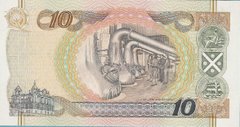31 July 2008
I wanna go
David Goodis was one of the bleakest and darkest of them all. His stories are peopled by angst-ridden low-lifes who just hope they can catch a break. Hard Case Crime recently put out The Wounded and the Slain among its fine series of reprints and new noir novels. A story on SF Gate today tuned me in to the PFA GoodisFest. Streets of No Return runs from the 1st to the 23rd of August.
30 July 2008
El Espíritu del Lugar

Like tequila, mezcal is made from agave. It has a similar overall nose and flavor, and not being much of a tequila drinker, I was not prepared to like mezcal all that much. But when you are in a place, the flavor of the local spirit takes on new qualities. It is almost as if you have to enjoy the drink. And enjoy I did. The city has several Benevá shops, including one in the airport, where a pretty señorita will fix you up with a bottle or two or three. We sat on the patio of the B&B most days and sipped the añejo, and sampled the blanco (drier, and to me, harsher) as well. They have a "worm" product, the con Gusano de Maguey, which we didn't purchase. It was not from a sense of squeamishness--I didn't know what con Gusano meant at the time! In fact, you get a baggie of a dry, yellowish powder called sal gusano (worm salt) with your purchase. It is a chaser, supposedly. At the pre-wedding cocktail party, the local hombres had us drinking the mezcal with a lick of sal gusano, a bite of lime, then the shot. I bought the blanco only because I thought the con Gusano was merely blanco with the sal pre-mixed. Duh. Sometimes you have to embrace being an ignorant tourist. Regardless, I embraced El Espíritu de Oaxaca, and came home with an enhanced appreciation for an authentic native drink.
¡SALUD!
p.s. I was tempted to call this post "I went all the way to México and all I got was this stupid mezcal bottle tag." Be glad I didn't.
29 July 2008
The Postman Always Seems Nice

They're here! Limited edition. FIFTY copies.
You want one. Call TEN POUND PRESS to-day!
(Operators are standing by.)
24 July 2008
This guy is on to something
At the wedding in Oaxaca, we did some weird napkin dance. Is that a normal thing in México? Or just at weddings? Or just at this wedding? Regardless, it was fun. Very fun. Everybody was happy and smiling.
Here's me doing the napkin dance:
Now you go to some foreign country and do some funky dancing. Make sure you get a picture of it. I'll bet people will be happy and smiling. Meanwhile, check in with Matt.
Have a nice day.
22 July 2008
México on my mind

Mexico's greatest leader, Benito Juárez, was a Zapotec from Oaxaca. In fact, the city itself, capital of the state of Oaxaca, is known as Oaxaca de Juárez. In Mexico City, the international airport is known as Aeropuerto Internacional Benito Juárez. So it is no surprise that Sr. Juárez' countenance graces the twenty-peso note. $20 Mexican is about $2.00 US. Lincoln and Washington grace our fiver and single, so it seems reasonable that the best guys get the lowest denominations. After all, Juárez was famously a "man of the people," and the people handle a lot of $20 notes. You can get a cold beer delivered to your seat at the ballpark for fifteen pesos, so it was the perfect bill to have on hand. Like the UK and Ireland, Mexican paper money is colorful, and the smaller denominations are smaller in size. I remember my Irish cousin asking, astonished, when I explained that US money is uniformly sized, "but what do your blind people do?" I said "trust someone." That wasn't a satisfying answer for either of us. The reverse of the bill features Monte Albán, naturally, Oaxaca's most famous landmark.

It was originally a Zapotec center. Today, the signs are in Spanish, English, and Zapotec. Pairing it with Juárez was the obvious choice. His story, from illiterate peasant to president of the nation, is one that resonates with all peoples. It is even more remarkable when you consider the racism against nativos (indigenous Amerindians) at the time. México is a place of great ethnic variety, another part of its unique allure. Our country's future is inextricably linked with that of our southern neighbor's. After all, our entire West once spoke mostly Spanish! With immigration, NAFTA, the drug trade, tourism--I can't see how any norte can keep from thinking about México. Maybe we'd be better off working with the people we share a continent with than running off to Afghanistan and Iraq.
Just a thought.
21 July 2008
Hot off the presses!
20 July 2008
Plata Mexicana

The 1970 World Cup was held in México, this commemorative lists (the fine print) all the previous winners ("holders" in FIFA-speak) chronologically from Uruguay in 1930 to England in 1966. I'm guessing this is the obverse. Here's the other side:
The fineness ("LEY 0.975") is listed just above "MEXICO." I had to use a 10x hand lens to read it. I loved the design, the modern footballer alongside his ancient counterpart. We had just been to Monte Albán and seen the ballcourt, and the friendly norte in the shop got us excited about an even larger site, Yagul. So excited in fact, that I negelcted to ask more questions about my purchase. So here is a commemorative silver coin of Mexican origin celebrating sport (deportes), friendship (amistad) and peace (paz), and I can find nothing about it. It weighs in at about 51.7 grams. A troy ounce of silver is about 31.1 grams. If the amount of silver in the alloy is indeed 91.75%, this fat boy tips in at a little more than 1.6 troy ounces of plata. (Check the spot price for silver here!) According to our yanqui acquaintance in the shop, Yagul was less developed, freer of tourists, and more impressive than Monte Albán. We got instructions on how to take the bus out there and back, and we left excited about a full day's adventure for our last full day in Oaxaca. Alas, I got a hold of the turistas, the mal de gringo, Moctezuma's Revenge, on that penultimate day. At least I was trotting to the toilet in the privacy of our room at Casa B rather than down the narrow isle of a Mexicana jet. I wonder how the US Customs crew would have reacted to my dancing, glute-squeezing, dehydrated, miserable self frantically trying to find a men's room in the bowels of LAX! Glad I didn't have to find out.
19 July 2008
No House Limit
18 July 2008
Ballgames
On a hilltop outside the city of Oaxaca, México, is a spectacular archaeological site called Monte Albán. We were fortunate to have a funny, knowledgeable and articulate guide during our visit there. I'm not much for tourist spots, but Monte Albán was beautiful, and a worthwhile destination. That's a photo of the ball-court. Who knows what kind of crazy ballgame the Zapotecas played? México is a great place for juxtaposing the old and the new. Sure enough, in the city we found our way to the parque de béisbol, where we got to watch a more familiar, modern game. They love baseball in Estados Unidos Mexicanos (yes, they are the "United States" too!). How can you NOT like a place that loves baseball? Naturally, we had to attend the games every night. We tried three times, got rained out once, and would have done a fourth and fifth but the wedding celebrations got in the way. After all, we did travel to Oaxaca for Ron and Susana's wedding, so we couldn't just blow off the cocktail party, ceremony and reception for a weekend of cervezas and cheerleaders, could we? Here's a look at the estadio, inside and out:
You can see the tarp crew at work. It was the wet season there, and we had showers most days. The Valley of Oaxaca was lush and green--it was hard to imagine that their dry season can go as long as nine months. A few times, when the sky overhead was filled with clouds and the air moist with impending precipitation, I squinted my eyes and thought I was in Ireland. Mexicans drive like the Irish, a pedal-to-the-metal "we're in God's hands now" fatalistic mad careering through narrow streets and around blind turns. And Mexicans, like the Irish, are impossibly friendly and generous, especially to American tourists. They play weird ballgames in Ireland, highly entertaining, impressively athletic, but not baseball. Here's some scenery that might make you think of the Emerald Isle:
Stay tuned for more México stories and photos!
17 July 2008
Free of earthly bounds
Recqueiscat in pacem.
13 July 2008
New Brews
12 July 2008
Latin noir
The Waitress of the Port Cafe is a Cuban film from 1950. The director, Juan Orol, was born in Galicia, Spain, and died in Mexico City.
Noir is not confined to the good ol' US of A.








